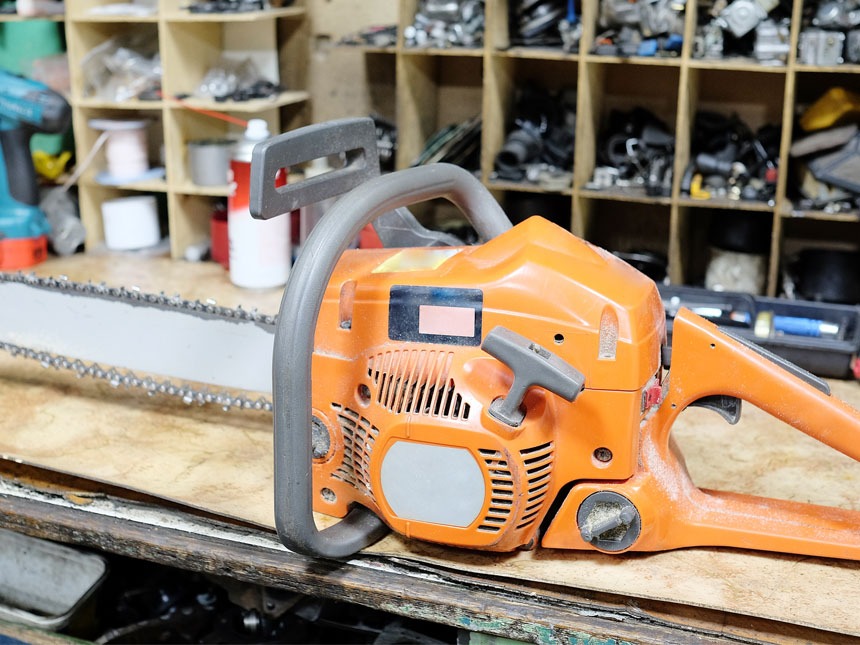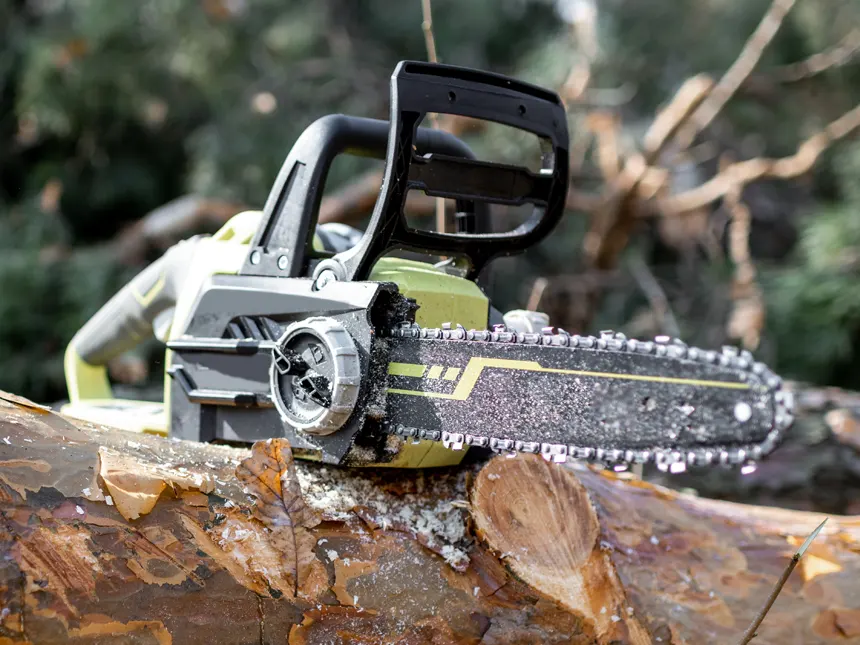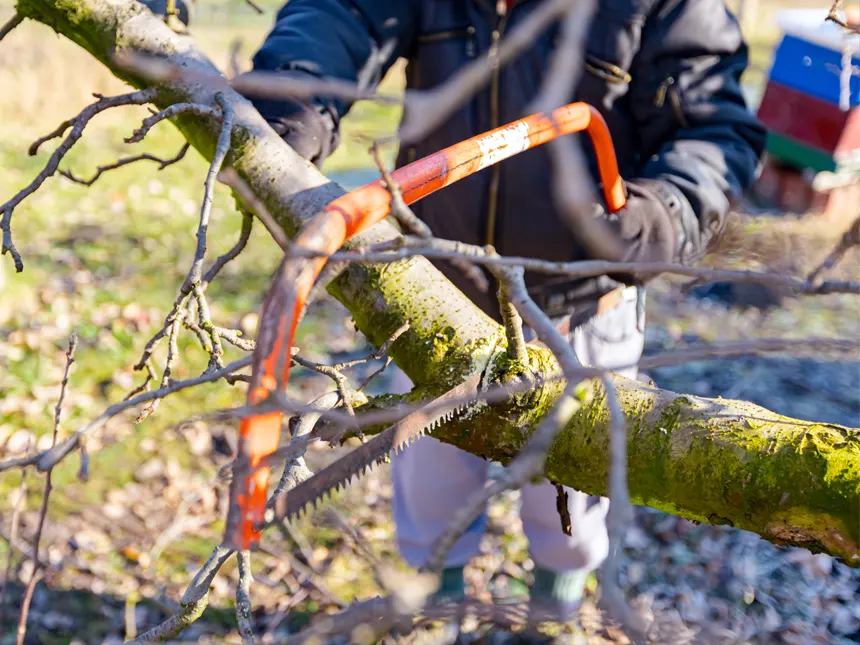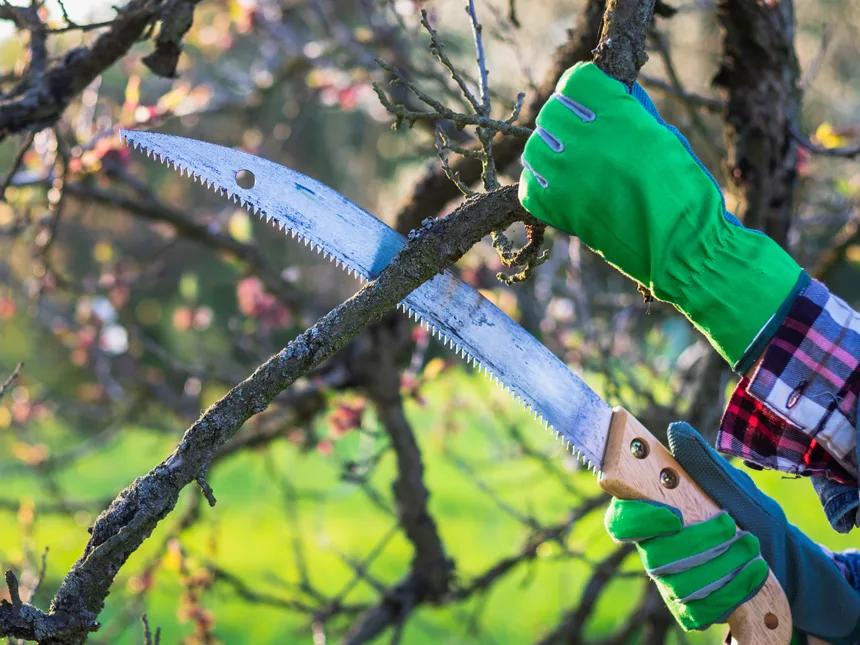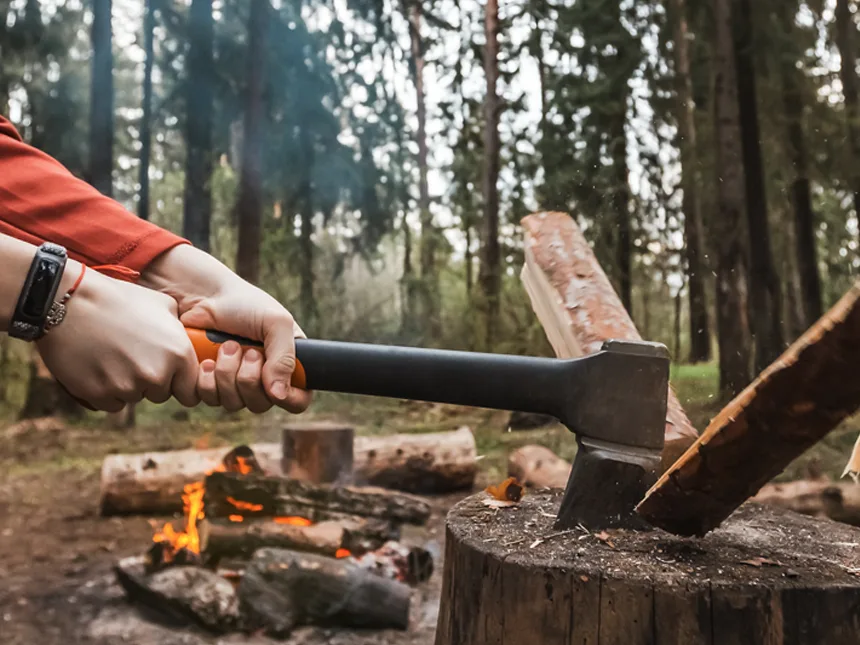The Parts of an Axe
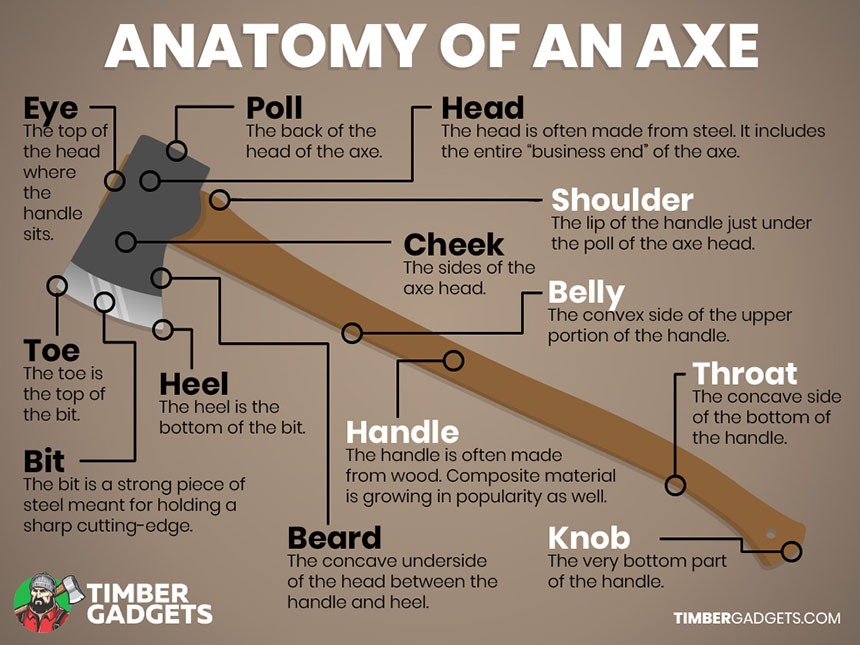
Timber Gadgets is reader-supported. We may earn a commission if you buy through the links on our site.
As you can see from the diagram above, there are many parts of an axe. In fact, so many parts that I couldn’t list them all in the image. I ran out of space. Perhaps that’s due, in part, to poor planning but I think we can agree on one thing; the anatomy of an axe is complex.
That’s precisely what this article is for and it’s all based on the illustration above. I’ll explain the main parts of an axe in the paragraphs below. To find see which part I’m talking about, refer to the picture.
One more thing; a disclaimer. Not all axes are the same. Not all the parts labeled here are found on every single axe. A full-steel axe doesn’t have an eye like an axe with a wooden handle does, for example.
Likewise, the parts of a single-bit and double-bit axe will differ slightly. You get the point. Use this guide as a beginner’s lesson in axe anatomy but remember, the parts differ depending on the tool.
Table of Contents
Anatomy of an Axe
As you’ve probably noticed already, many of these parts are named after parts of the body; head, eye, cheek, belly, shoulder, etc.
It’s for this reason that people refer to the parts of an axe as the anatomy of an axe. I’m bringing this to your attention so we’re on the same page. Without further delay, let’s get started.
Head
The head of the axe is the entire steel, “V” shaped portion of the axe. It’s the business end, so to speak; the part that cuts. Nowadays, the head of the axe is made from various steel. In times past, people used stones.
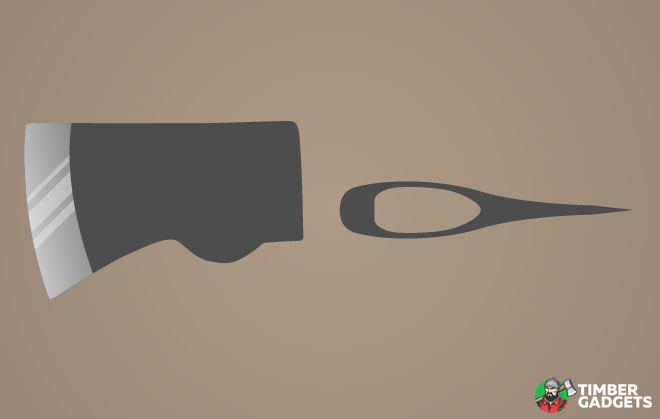
Eye
The eye is the center of the axe head where the handle passes through. In the illustration above, you can see through the eye of the head (on the right side).
Traditional axes use a wedge to spread the top of the handle; thus keeping the head from flying off the handle while you’re swinging.
Not all axes have an eye, however. Those crafted with a composite handle, for example, have no use for an eye because the head is attached to the handle in a different manner.
Likewise, all-steel axes have no use for an eye because the head and handle are all one piece. In this case, a shock reduction grip is added to lessen the punishment while using the tool.
Bit
The “bit” or “blade” is where the cutting edge is found. The steel used for the bit is oftentimes a stronger, different type of steel. This is nothing new. In fact, it has been common practice for years.
In the early years of the metal axe head, blacksmiths didn’t have many options available. Good, strong steel was in short supply so they would use the best for the bit. The rest of the axe was crafted from softer steel.
With that in mind, an axe can be a single bit or double bit. The one in the diagram above is a single-bit, meaning it has only one bit. A double-bit axe has two cutting edges; one on either side.
Toe
The toe of the bit is the top corner of the cutting edge. Some say this part got its name because the toe is the body part it usually removes from careless woodsmen.
Heel
The heel of the bit is the bottom corner of the cutting edge. It should not be confused with the beard. Read more on that below.
Beard
It’s easy to confuse the heel and beard of an axe head. The best way to explain what the beard is located is to picture an actual beard. A beard can be short or long and it’s the same concept in regard to an axe’s beard.
It’s the concave part of the head of the axe that expands forward from the handle, ending at the heel of the bit. I’ve provided a separate illustration for the beard below.
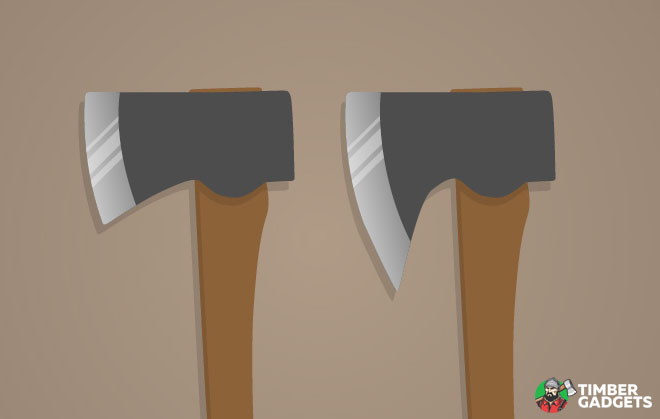
Broad axes are well-known for having a long beard. As with all tools, the type of axe is a reflection of the task it’s created for. For broad axes, a long beard is useful for the hewing process; they also sport a uniquely curved handle.
Cheek
Simply put, the cheek is the side of the axe head; there is a cheek on either side.
Poll
The “Poll” or “Butt” of the very back part of an axe head. Depending on the type of axe, this may be utilized as a hammer. Double-bit axes don’t have a poll because there is a bit on each end.
Even so, many axes use this portion to add more functionality to the axe. Whether it be a hammer, spike, another bit, etc.
Handle or “Helve”
For centuries, handles, also called “halves” or “hafts,” were crafted from various types of wood. Primarily American Hickory. Nowadays, composite materials are becoming more common due to their superiority in terms of strength and weight.
However, replacing a composite handle is usually out of the question. For this reason, most high-quality axes still use wooden helves.
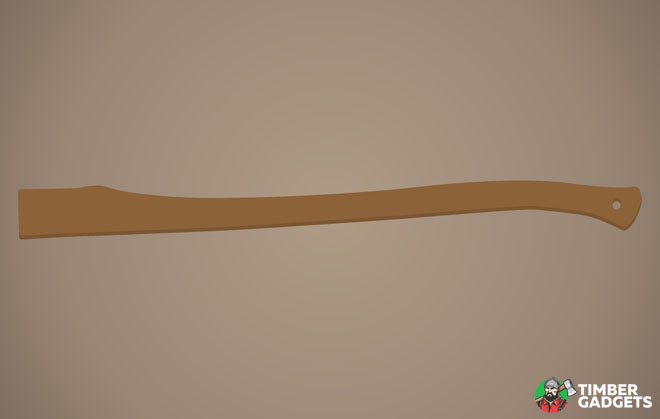
Aside from wooden and composite handles, there are a few manufacturers producing full-steel axes. The handle and head are forged from a single piece of steel. A nice, rubber grip is fitted on the bottom of the handle to absorb some of the shocks from each strike.
A full-steel axe or one with a composite handle, doesn’t have the same anatomy as a traditional axe.
Shoulder
The shoulder of the handle is directly below the head of the axe. Most have a noticeable curvature here but not all.
Belly
The bellow of the axe is the front of the handle. Some handles have a convex bend starting around the midpoint of the handle reaching towards the top, and nearing the head of the axe.
Throat
The throat is nearing the end of the handle. It can be either concave and in shape or completely straight, depending on the style of the handle. This is approximately the area where the “grip” is found.
Grip
As its name suggests, the grip is where your hands will properly “grip” the axe handle. Being that an axe is a two-handed tool, both hands should be used.
Knob
At the very end of the handle is the knob. It generally flares out. The main purpose of the knob is to keep your hands from slipping off the handle.
Difference in Parts
As you begin learning more about axes, you’ll quickly realize there are as many different types of axes as there are parts to those axes. And while the parts mentioned in this guide cover the basics, it’s not everything and not all axes have the parts listed above.
Use this as a base guide; something most suitable for the traditional brands.
Axes with composite handles, for example, won’t always have an eye in the head. Most composite handles wrap around the head instead of passing through.
A double-bit felling axe doesn’t have a poll or butt. And as useful as a flared knob is, not all handles have one. The list goes on. You get the point.
These parts are designed differently depending on the tool, too. For example, the bit of a felling axe, which is meant for chopping, is made different than that of a splitting maul.
It’s because they have two different jobs. From felling trees to splitting firewood to hewing lumber, the role of the axe is seemingly endless.
Related:
Summary
An axe is a simple tool. It’s extremely effective and powerful, yet simple. It’s a head attached to a handle. While not all axes have the same parts, knowing the basic anatomy of a good old-fashion axe is a great starting point.
More important than knowing each and every part is practicing safety while wielding one! I hope this guide helps you understand the main parts of an axe. If so, please consider sharing with family and friends.
Also, I encourage you to continue learning more about axes. A good place to start is by learning about the different types of axes. After that, check out the different axe brands.

